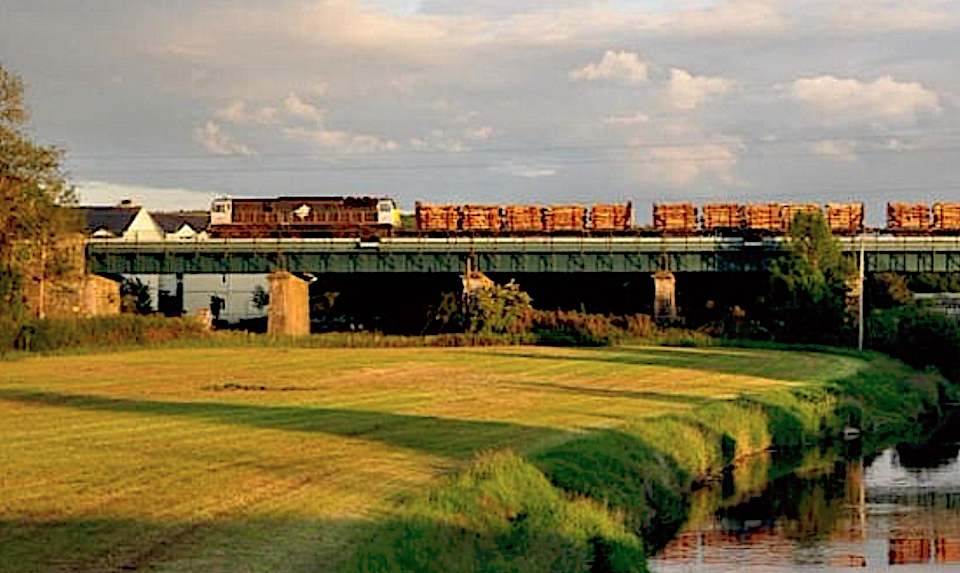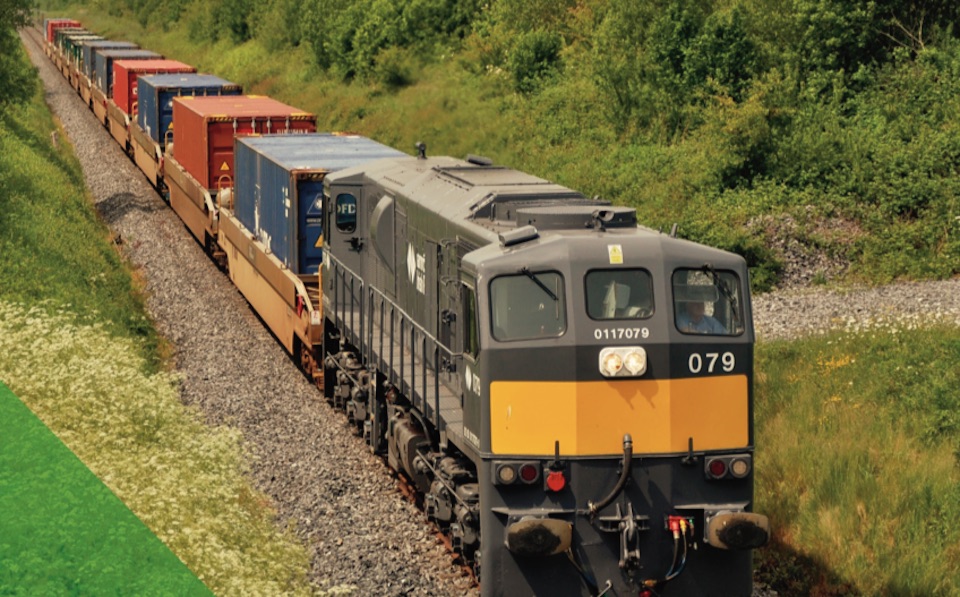Dublin gives an uneven impression of the health of Ireland’s railway network. Trams, busy commuter lines, freight and long-distance express trains all compete for space around the capital’s tracks. It’s not quite the same story in the less heavily populated provinces of the republic. That, though, is something the Irish authorities have a plan to change.
There is a bid to revolutionise public transportation and bolster freight logistics in Ireland. Iarnród Éireann, the native Gaelic name for Irish Railways, is embarking on an ambitious plan to overhaul the rail infrastructure in the officially bilingual state. The initiative aims to not only enhance commuter and regional services but also elevate the role of rail freight, an under-utilised segment in the country’s transport portfolio. Rail freight is also regarded as a driver of future economic prosperity throughout the island.
Ireland’s future freight transport
Iarnród Éireann’s Irish Rail Freight division has possibly the most to gain from a freight resurgence. Only a tiny fraction of Irish freight currently moves by rail. Development is the thinking behind “Rail Freight 2040”, a critical look at the sector and a response to government inertia. The strategic blueprint positions rail as the linchpin of Ireland’s future freight transport system. Growing the rail freight sector sits well with the national drive towards changing the Emerald Isle into environmental Ireland.

Recent developments include a commitment to modernisation and expansion, which has previously been largely confined to the passenger sector. Among the first projects is a scheme to construct a second railway track along the Midleton-Glounthaune branch in Cork, in the south of Ireland. Eliminating bottlenecks and streamlining operations is only the vanguard of a programme to improve capacity and network reliability. The Cork commuter project alone could treble frequency, paving the way for a train every ten minutes, making public transport a much more attractive proposition in a way that’s currently only available in Dublin. There is even talk of extending the line eastwards for mixed traffic to Youghal – which has not been served by rail for around sixty years when the final freight services ran.
Irish fields ripe for rail expansion
Ireland’s rail usage remains relatively modest compared to its European counterparts. Just three per cent of passenger kilometres in the Republic are attributed to rail. The European average stands at almost three times that level. Freight is in not much better shape. Terminals and trains compete with modern road transport, which benefits from the 1990s programme of road building. That legacy of the Celtic Tiger economy transformed many trunk routes across Ireland, making road transport much more attractive. To address this imbalance, Iarnród Éireann is poised to ramp up both passenger and freight traffic, with plans for extensive enhancements across the network.

In the west of Ireland, the small university city of Galway is eager to harvest a crop of rail expansion. For example, the Oranmore-Galway commuter corridor shares a single track with the main line, all the way to Dublin. Proposed enhancements include additional passing loops and platforms, paving the way for accelerated services and heightened frequency. Long-term aspirations are to double-track further sections, particularly between Athenry and Galway, facilitating more capacity for mixed traffic.
Aligned with broader cross-border environmental imperatives
Efforts to revitalise Ireland’s rail infrastructure extend beyond the Republic’s borders. The “All-Island Strategic Rail Review” is a collaboration between the Dublin government and the devolved British administration in Belfast. The agreement underpins a 30-year, 30-project programme, with a budget of 36.8 billion euro (about 32 billion pounds). That vision for an integrated rail network transcends political boundaries in a way not seen in Ireland for a century. Quite an ambition, given the divided recent history of Ireland.
The impetus for this overhaul is not solely grounded in transport efficiency. It is also aligned with broader environmental imperatives. Transport accounted for fully 19 per cent of Ireland’s emissions in 2022. Although it should be noted that road traffic is responsible for 95 per cent of all those transport emissions. In line with the government’s Climate Action Plan, the transport sector is tasked with halving its carbon footprint by 2030. That’s a taller order than simply increasing commuter traffic to Cork and Galway, but Ireland’s railways do have a part to play in that re-greening of the Emerald Isle.